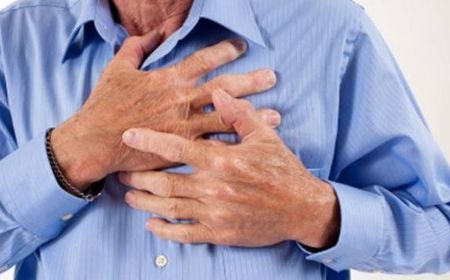Experts with the CDC released the top five things that kill two-thirds of United States residents Thursday afternoon.
Five things kill more people in the United States than anything else: Heart disease, cancer, lung disease such as emphysema and chronic bronchitis, stroke and unintentional injuries such as those on roads or caused by medication overdoses.
These five leading causes of death accounted for 63% of all deaths in the U.S. during 2010 and varied based on state. Using the rate from the states with the lowest numbers for these types of deaths, the CDC estimates that if all states had the lowest death rate observed for each cause, these number of premature deaths would be reduced by:
34% of premature deaths from heart diseases, prolonging about 92,000 lives
21% of premature cancer deaths, prolonging about 84,500 lives
39% of premature deaths from chronic lower respiratory diseases, prolonging about 29,000 lives
33% of premature stroke deaths, prolonging about 17,000 lives
39% of premature deaths from unintentional injuries, prolonging about 37,000 lives
Risk factors that contribute to these causes of death that are modifiable include:
Heart disease risks including tobacco use, high blood pressure, high cholesterol, type 2 diabetes, poor diet, overweight, and lack of physical activity
Cancer risks including tobacco use, poor diet, lack of physical activity, overweight, sun exposure, certain hormones, alcohol, some viruses and bacteria, ionizing radiation, and certain chemicals and other substances
Chronic respiratory disease risks including tobacco smoke, second-hand smoke exposure, other indoor air pollutants, outdoor air pollutants, allergens, and exposure to occupational agents
Stroke risks including high blood pressure, high cholesterol, heart disease, diabetes, overweight, previous stroke, tobacco use, alcohol use, and lack of physical activity
Unintentional injury risks including lack of seatbelt use, lack of motorcycle helmet use, unsafe consumer products, drug and alcohol use (including prescription drug misuse), exposure to occupational hazards, and unsafe home and community environments
While many of these risks could be altered with personal behavioral changes, others are due to inequalities in social, demographic, environmental, economic, and geographic areas of work and living. The elimination of these such health disparities is outlined in the Healthy People 2020 initiative to improve health nationwide.
Agencies/Canadajournal
 Canada Journal – News of the World Articles and videos to bring you the biggest Canadian news stories from across the country every day
Canada Journal – News of the World Articles and videos to bring you the biggest Canadian news stories from across the country every day



